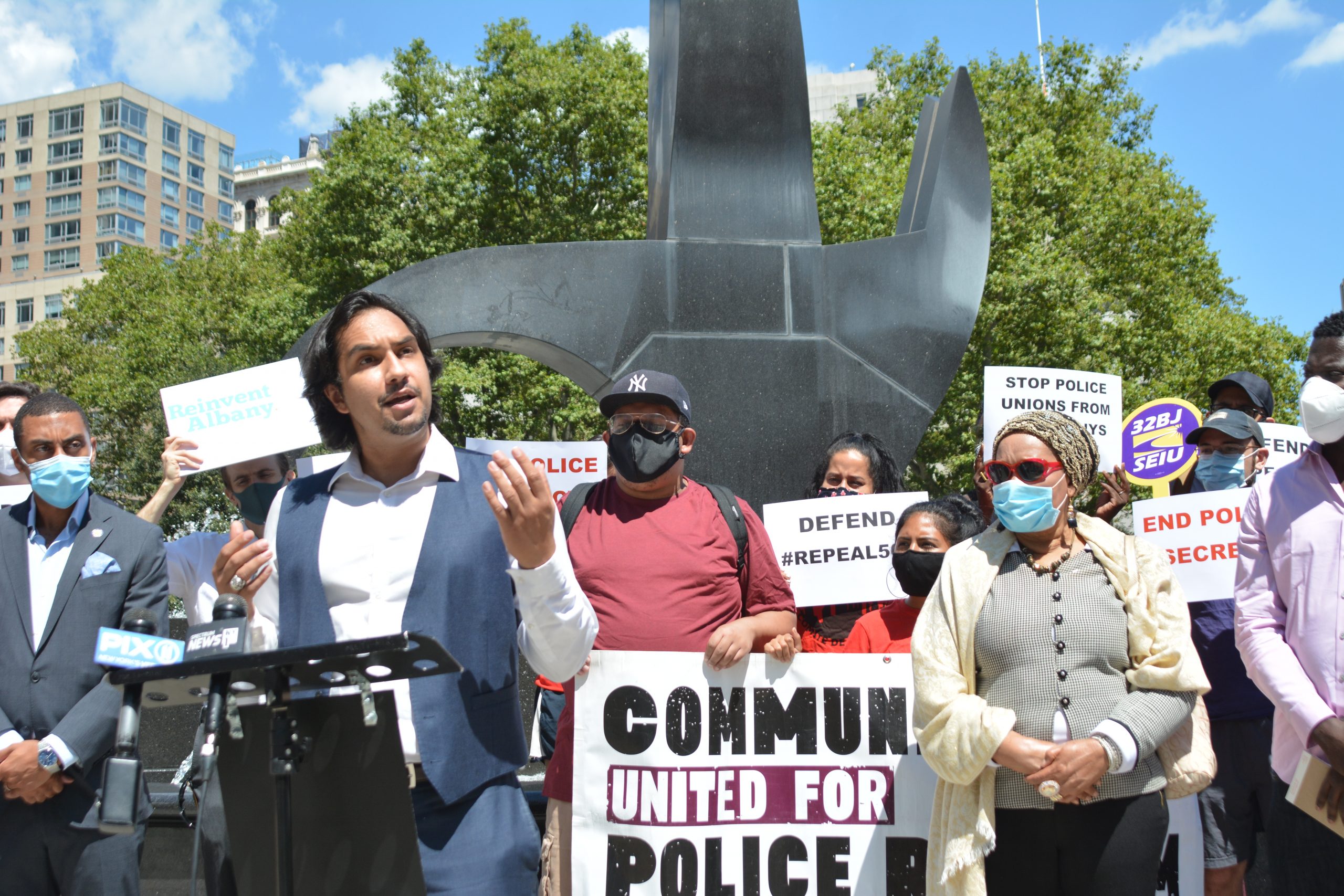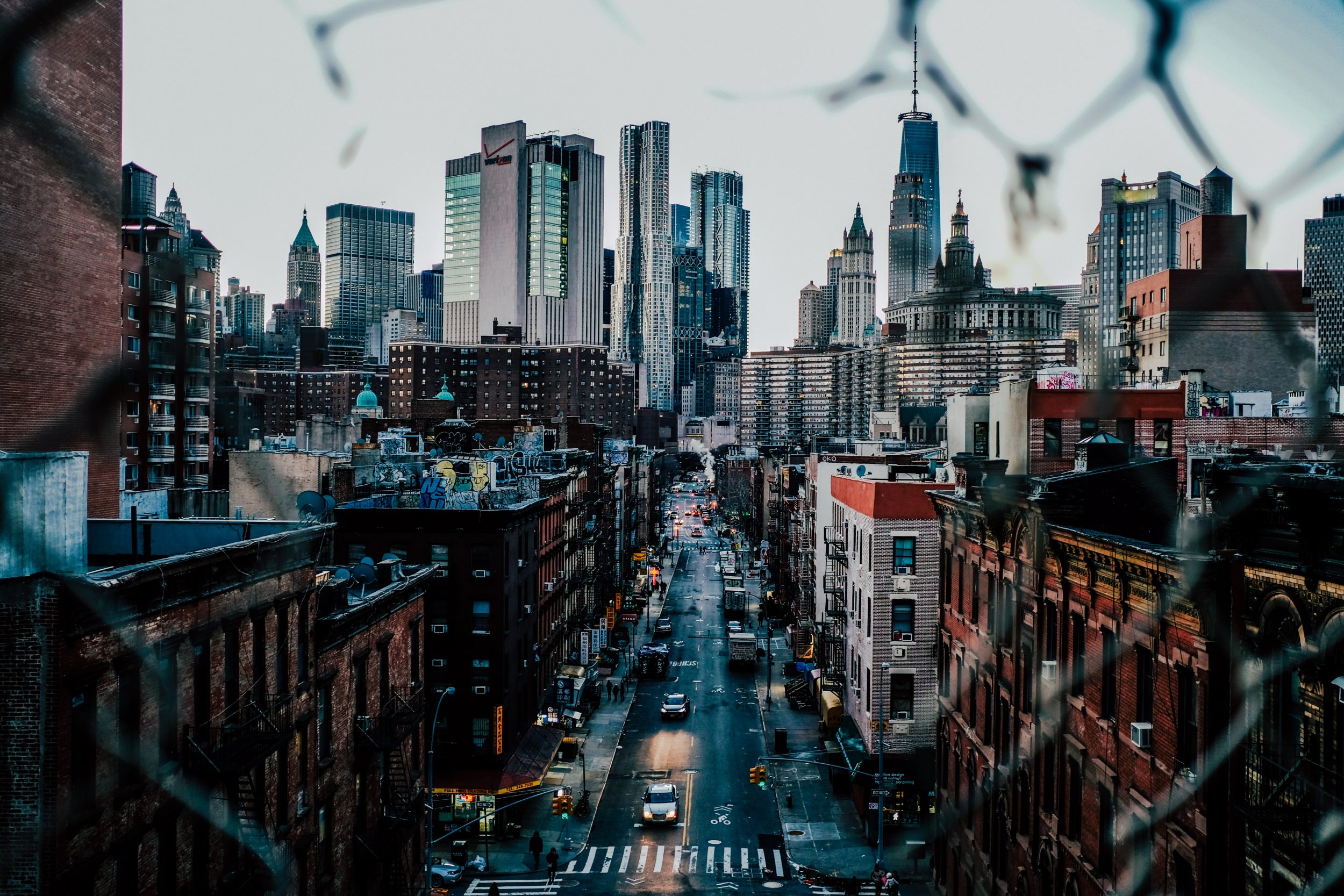The movement to end the punitiveness of New York City’s criminal legal system has come a long way since Cyrus Vance Jr.’s early days as Manhattan district attorney, when the bar for “reform” was tragically low, and Vance was happy to oblige. After 12 years of being pushed by activists, public defenders, and a growing crop of progressive politicians, Vance is set to end his tenure a disappointment, a sign of the missed opportunity for New York City to truly lead on criminal justice reform.
As someone who ran for and hoped to succeed Cy Vance as the next Manhattan DA, on a platform to dramatically transform the office, I offer no pretense of objectivity. He was — and remains, until December 31, 2021 — the leading jailer in the city and state of New York. He unilaterally frittered away hundreds of millions of dollars from financial settlements that could have helped dismantle our criminal legal system. By his very stature as Manhattan DA — the most prestigious prosecutorial office in one of America’s most liberal cities — he set an unspoken ceiling on what “criminal justice reform” meant.
I met with Vance in private only once, but it was instructive on how fundamentally different our views on the purpose of prosecution were. During the heat of the campaign to close Rikers Island, before many mainstream politicians had come on board, I met with Vance and one of his deputies, armed with a fairly modest request: Stop sending people to Rikers on misdemeanors. Vance hemmed and hawed. “For some of these guys, this is the fifth or sixth time they’re in court on the same issue,” I recall him saying. “What other choice do we have?” Most people who are familiar with the plight in our city’s jails, as Vance’s post required him to be, would probably think, “Isn’t someone’s sixth appearance in court on the same issue a sign that our conventional approach to prosecution isn’t working? And how would a dangerous stay in Rikers help?”
Such was Manhattan’s “reformer DA,” a myth that many New Yorkers believed and that, for three terms, allowed him to run and be elected with little opposition or accountability. After starting his career as an assistant district attorney in Manhattan, Vance spent most of his adult life in Seattle, where his years as a defense attorney gave the then-small reform community hope that he might bring a less punitive approach to Centre Street than the predecessor who anointed him, Robert Morgenthau. Instead, much of the old guard, set in its ways after Morgenthau’s three-decade reign, stayed on. And, outside of a handful of impressive public servants who joined along the way, the office under Vance’s tenure measured success by how aggressively they could prosecute people, embracing change with great reluctance.
Were Vance to rebut, he would probably point out that during his tenure, numbers are way down across categories that matter: prosecutions, marijuana convictions, people in jail pre-trial, people serving time in prison — and these are all true. Given what we know about him and his office, however, I largely credit this progress to the growing strength of the criminal justice reform movement, especially the directly impacted people at the forefront of it. Sex workers changed the way prostitution was prosecuted. Overpoliced communities led the charge challenging stop and frisk, as well as its twisted cousin, marijuana arrests. Formerly incarcerated people powered bail reform and the campaign to close Rikers. Vance has always been late to the party, and his office has endured criticism for unevenly implementing promised policies, like ending the prosecution of fare evasion.
I ran for DA on a platform with a different vision, arguing that the DA’s office preserves public safety by addressing the root causes that lead people to commit harm.
I ran for DA on a platform with a different vision, arguing that the DA’s office preserves public safety by addressing the root causes that lead people to commit harm. We published numerous policies that would meaningfully change the system in New York, calling for: abolishing the Office of Special Narcotics Prosecutor; centering our response to intimate partner violence around survivors; moving toward a restorative justice approach within the DA’s office; tackling climate change; and most importantly, cutting the jail population by 80 percent. We had to drop out before Election Day for lack of fundraising cash; and, after careful deliberation, I endorsed Alvin Bragg, who won the Democratic nomination and, ultimately, the election earlier this month. (Full disclosure, I am serving on his transition team now, though I will not be serving in his administration.)
Even as we navigate what will continue to be a challenging period for criminal justice reform anywhere, including New York, I am optimistic about what Alvin Bragg will bring to the Manhattan DA’s office for three reasons: the change in leadership at the top, the evolved expectations for a DA’s office, and the increased strength of the movement to push and partner. That last word is crucial, because the advances of the past five years are far too tenuous to be preserved without meaningful cooperation between people along the spectrum of change from reform to abolition — especially as we prepare for the incoming administration of Mayor-elect Eric Adams.
First, having spoken many times to DA-elect Bragg and people close to him, I can attest that his philosophy is completely different than Vance’s, informed by everything from his experiences as a teenager being mistreated by the NYPD to the people he keeps around him to this day. His transition team is ideologically diverse, but it’s stacked with New Yorkers who have spent their career challenging the carceral system.
Second, the role of the district attorney in America has changed. The national effort to elect reform and progressive prosecutors is working, both electorally and in driving policy outcomes. This has been true in every region of the country, including New York City. Consider, to name one local example, the uninspired debate between career prosecutors in the 2017 Brooklyn DA race, and how far the goalposts moved in just two years for the 2019 Queens DA race, where progressive Tiffany Cabán pushed the whole field, including the victor who narrowly prevailed, to the left. Or how much deeper the conversation around transforming the system became in the 2021 Manhattan DA’s race.

There were several candidates to the left of DA-elect Bragg, myself included, who proposed more extensive approaches to pretrial decarceration, sentencing reform, and reductions in the DA budget. And yet despite that, I noted in my endorsement, and still believe, that Bragg’s platform is the most progressive and far-reaching of any successful DA candidate in New York’s history. This is evident in his commitment to ending cash bail (something Vance would never support) and his vow to take on corrupt police officers, something that gives most DAs shaky knees in a city where the NYPD has so much power. That’s worth celebrating. Likewise, Bragg will have plenty of models to work off of from innovations being pushed by progressive district attorneys from Boston, Chicago, Philadelphia, Austin, Los Angeles, San Francisco, and beyond.
One consequence of Vance’s minimalist approach to reform is that it set a natural ceiling on the role of district attorneys across the country. Legislators outside the coasts view places like California and New York not as models for policies they should adopt or adapt, but rather as the highwater marks of “crazy” liberalism, especially Manhattan. Philadelphia District Attorney Larry Krasner and company have busted through those expectations. Krasner and Cook County State Attorney Kim Foxx have even successfully beaten back fearmongering from opponents and coasted to reelection after major reforms to their offices. That gives Bragg a serious opening to innovate.
Third, the movement is as robust as it’s ever been. The field is awash in support, which in New York has resulted in dozens of criminal justice organizations being able to devote their full energy to the cause. Public defenders are as organized and political as I’ve ever seen them. And the current wave of progressive politicians in their 20s and 30s are unapologetic about the need to completely overhaul the criminal legal system. For people newer to politics, or unfamiliar with New York City’s political machine, please understand that having allies like these would have been considered an impossible luxury even five or six years ago.
Despite these reasons for celebration, the state of justice is in a precarious place, because serious criminal justice reform is usually not politically popular, even in liberal places. (More modest reforms poll extremely well.) This discomfort extends to many in communities most impacted by over-policing and mass incarceration in New York City. I experienced this personally knocking on thousands of doors in the parts of Manhattan most affected by these policies, before COVID grounded our campaign. Most people were not opposed to a more humane system centered on solving root harms and investing more in their communities — especially young people. But people also wanted real-life concerns dealt with immediately, even if it meant using our limited toolkit of locking people up in an attempt to solve social problems. We got to experience this ambivalence collectively when city voters elected a former police officer who wants to roll back bail reform as mayor. That’s the dire reality we’re facing, to say nothing of what happened this November in the Long Island DA races and other parts of the region.
Despite obvious points of disagreement, people across the spectrum, from moderate reformer to abolitionist, should work hard to seek out points of shared political interest and come together to build a broad-based movement that achieves lasting changes.
Given these political realities, people across the spectrum from moderate reformer to abolitionist should, despite obvious points of disagreement, work hard to seek out points of shared political interest and come together to build a broad-based movement that achieves lasting changes. I’ve collaborated with people on both ends of this spectrum, and can attest that most folks doing this work, across the board, are driven by both moral values and a desire for solutions. For example, the crisis at Rikers seems like a natural meeting place for people to unite around getting people out. On this last point, we could start by agreeing that the five current district attorneys across New York City, all of whom are feeding the crisis through their bail and pretrial decisions, are all betraying an utter callousness and complete lack of urgency. They all need to be pushed harder publicly.
A more sustainable movement for serious criminal justice reform should also adjust its relationship to politicians. The organizing tenet of “no permanent friends, no permanent enemies” means that the movement should hold politicians accountable for bad votes, as it often has; and the second half of the quote points to the need to recognize useful allies when they do step up, even if we don’t agree on everything. We have to be strategic and thoughtful about what real power looks like, and this means going beyond what might feel cathartic on Twitter.
Blessed as we are to move on from 12 years of Cy, the movement faces turbulence ahead. For much of that time, we benefited from a good economy, declining crime rates, bipartisan commitments to criminal justice reform, increased philanthropic and media attention, and some truly low-hanging fruit that gave reform a sense of momentum. Now much of that script is flipped. Some of these challenges are well beyond the control of New York City advocates. But what isn’t is our ability to build bridges, to find points of shared purpose on the path towards a world without jails and prisons, and to be strategic in forging coalitions, even with unlikely partners. Important players in New York’s political firmament, such as faith leaders, tenant leaders, and unions, can be brought closer into the criminal justice reform movement, while community boards and various elements of the business community can also be included, or at least neutralized.
I can’t promise that Alvin Bragg will succeed in completely turning the page from the Cy Vance era. But a unified criminal justice reform movement should stand with him when he does the right thing — and hold him accountable when he doesn’t.
I can’t promise that Alvin Bragg will succeed in completely turning the page from the Cy Vance era. But a unified criminal justice reform movement should stand with him when he does the right thing — and hold him accountable when he doesn’t. Should he fail in the public’s eye, despite best efforts, it will be labeled a failure for criminal justice reform, both in New York and nationally. That’s a risk we can’t afford. Prosecutors play an outsized role in the criminal legal system, and innovating ways to wield their power to lessen harm — and to simultaneously reduce their power within the system — holds tremendous potential. The backlash against progressive prosecutors and their policies, at a time when their success is intertwined with other goals of the movement, must be met by a united front. There is a lot at stake — an incredible opportunity, with staggering consequences.
Image: Unsplash

